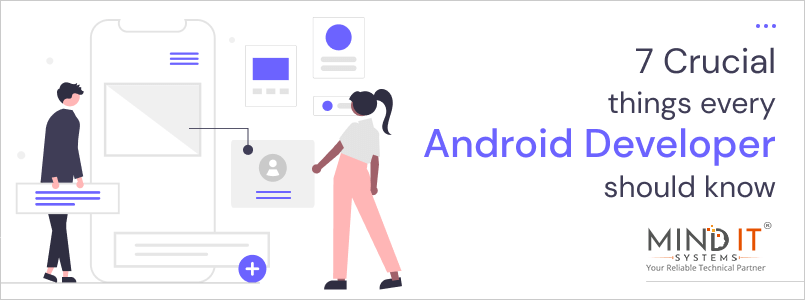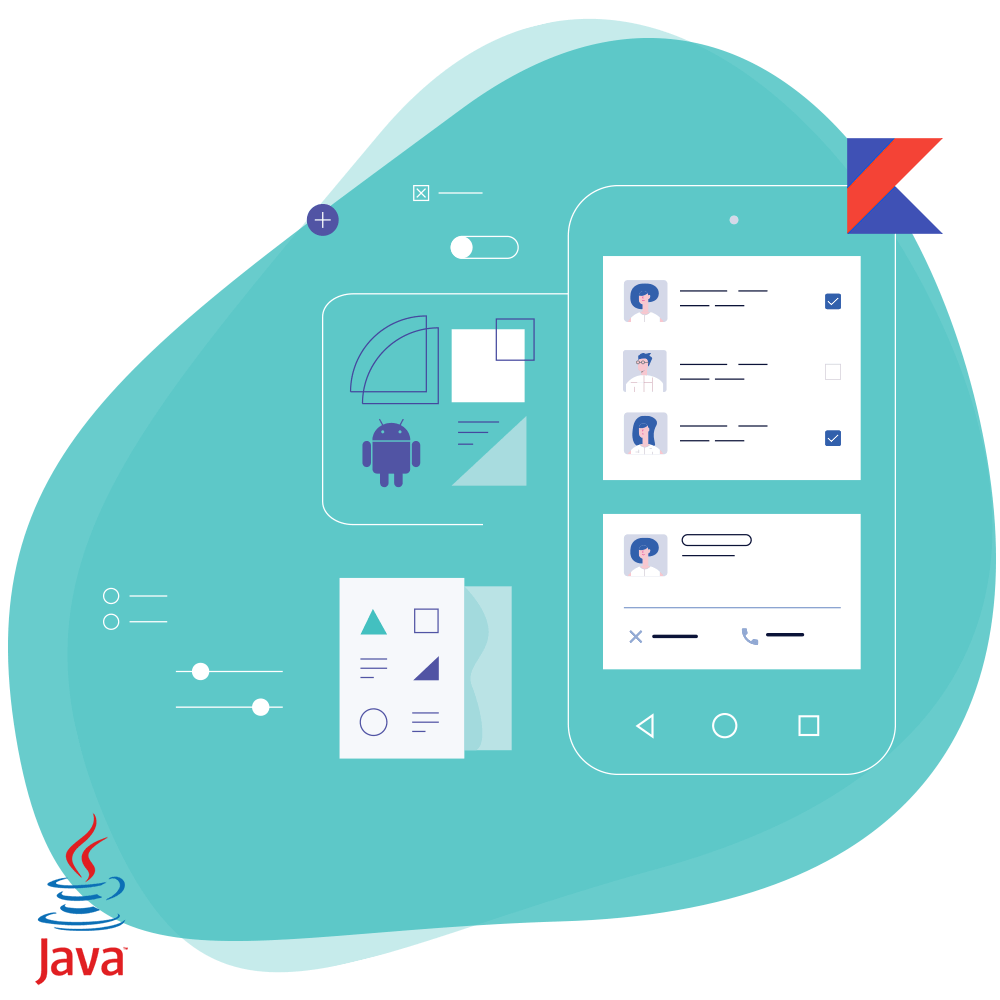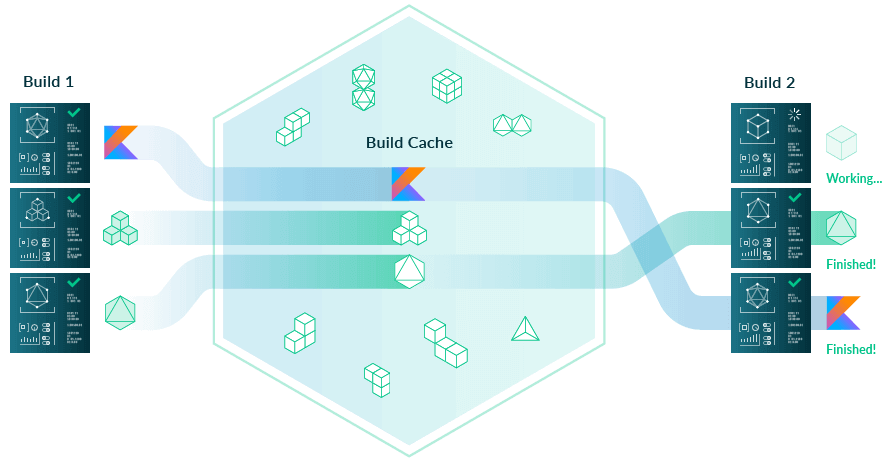
7 crucial things every Android Developer should know
To develop Android applications, you require a good understanding of programming and design. And must also know everything related to the development of an excellent Android application.
It doesn’t matter how you have learned to build Android apps, whether from your degree or a coding camp. If you are truly serious about taking your Android skills to the next level or go from beginner to a professional level, you need to follow and learn the seven crucial things provided here.
Android Application Architecture
The application architecture is a plan which you need to follow consistently and be mindful of even before the development, to ultimately have an Android application that meets the user’s needs.
Android architecture plan provides a map of how the different application components should be organized and tied together. It also provides guidelines that should be followed during the development process and forces some sacrifices that in the end helps you to construct a well-written application, which is more testable, expandable, and maintainable.
Knowledge of Java & Kotlin
One of the must-haves is knowledge of Java and Kotlin. These languages can seriously be game-changers for Android developers. For developing native Android apps, Java and Kotliin are programming languages every Android developer must know.
The best thing about Kotlin is that it easily integrates seamlessly with Java, so you can start writing code with your current existing Java code and shall have almost no issues while using it. In fact, in the case of Kotlin, Google has announced that it is the first choice for Android development.
As far as Java is considered, it is used in an integrated development environment for Android application development. If you have gained most of your programming experiences in languages like JavaScript and Ruby, there is a learning curve when picking up Java for the first time.

Android SDK
SDK is actually a name for a set of pre-packaged codes. Android SDK is a collection of libraries and tools that give developers access to mobile devices functions like the camera and accelerometer.
Every time Google releases a new version of Android, a corresponding SDK is also released. Developers to be able to write programs with the latest features must download and install each version’s SDK for the particular phone. The SDK represents Android’s toolkit for a specific version and technology of its operating system. New Android developers should spend some time discovering how the various libraries in SDK can be pieced together in different ways to put together android applications.
Android Studio
Android Developer’s choice of IDE (integrated development studio) is called Android Studio. It makes it absolutely seamless for Android application development on any interface.
Android Studio is built on top of the well-respected JetBrains’ IntelliJ IDEA software and is specially designed for Android development. It comes with great out-of-the-box support for many of the most common Android SDKs.
It is important to know the working of the Android studio since it supports all programming languages of PyCharm, Kotlin, and Python as well as Intellij.

Android Activity Lifecycle
Android is an open-source operating system that is useful in many tasks. When you load your Android application, it undergoes various states and that is called the Android Activity Life Cycle.
Activity is one of the most important components of Android. It’s an activity where you put the UI of your application. So, if you are new to Android development then you need to learn what an Activity is in Android and what is the lifecycle of an Activity.
Constraint Layout
Constraint Layout on Android is a layout that gives you adaptable and flexible ways to create views for your apps. Constraint Layout, which is now the default layout in Android Studio, gives you many ways to place objects. Using this layout you can now create large, complex, dynamic, and responsive views in a flat hierarchy. It also supports animations.
Constraint layout streamlines making layouts in Android by making it conceivable to build the most of your UI by utilizing just the visual editor in Android Studio. Constraint layout comes with some powerful tools with help of which you can define complex layouts without deep nesting. So it flattens the view hierarchy and gives better performance, making it easier for the developer to put together the UI.
Android Architecture Patterns
To structure the project’s code and to give it a modular design, architecture patterns are applied to separate the concerns. Following are the most popular Android architectures used by developers.
MVC (Model – View – Controller)
MVC (Model – View – Controller) Pattern is the oldest app architecture which simply suggests separating the code into 3 different layers:
- Model: A Layer for sorting data, Model is responsible for handling the domain logic and communication with the database and network layers.
- View: A User Interface layer, View provides the visualization of the data stored in the model.
- Controller: It’s a layer that contains core logic. It gets informed of the user’s behavior and updates the model as per the need.
MVP (Model – View – Presenter)
MVP (Model – View – Presenter) pattern is the second iteration of the Android app architecture. This pattern is widely accepted and is still recommended for upcoming developers.
- Model: A Layer for sorting data, the Model is responsible for handling the domain logic and communication with the database and network layers
- View: A User Interface layer, View provides the visualization of the data and keeps track of the user’s action in order to notify the presenter.
- Presenter: Fetches data from the model and applies the UI logic to decide what to display. It manages the state of the view and takes actions according to the user’s input notification from the view.
MVVP (Model – View – ViewModel)
MVVP (Model – View – ViewModel) pattern is the third iteration of Android architecture.
- Model: This layer is responsible for the abstraction of the data sources. Model and ViewModel work together to get and save the data.
- View: The main purpose of this layer is to inform the ViewModel about the user’s action.
- ViewModel: It exposes those data streams which are elements of the view.
The main idea of all these patterns is to organize the project in a proper way so that all codes get covered in the Unit Testing. Moreover, these patterns are very helpful in the maintenance of the software, decoupling, and to add and remove features; developers can keep a track of various crucial logic parts by effectively following architectures.
Few Additional Skills
If you are looking to become a full-fledged Android developer then along with the above- mentioned languages and skills, you also need to brush up with additional back-end technology skills such as .Net, Rails, Django, NodeJS, etc. Learning these additional skills would let you get familiar with the design of a system and the language syntax. Its not absolutely necessary, but having such knowledge gives you a full rounded view of how the android application works and interplays with middleware or backend.
About the Author

Hunny Jain (Android Developer): Hunny Jain is an energetic and curiosity-driven Android developer at Mind IT Systems with a total of 4 years of work experience. Apart from being a developer, he is also an avid traveler and enjoys writing on various travel destinations. He has extensive knowledge of many top travel destinations around the world, including the best restaurants, hotels, and attractions.

